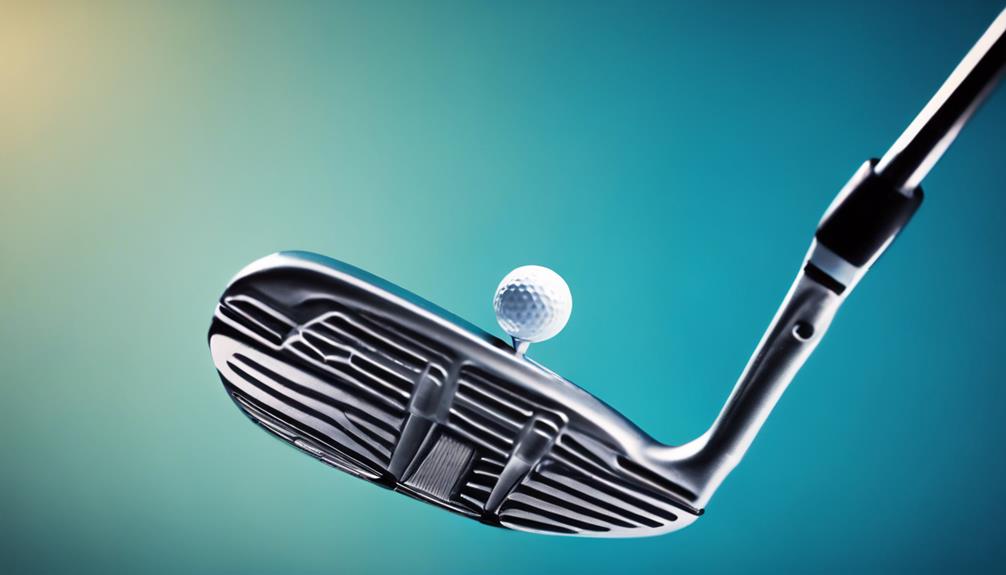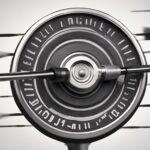- 7 Top Flite Golf Clubs XL for Improved Performance - September 28, 2024
- Top Flite Golf Clubs: Top 5 Reasons to Choose Them - September 28, 2024
- Top 3 Golf Club Fitters for a Perfect Swing - September 28, 2024
As you step up to the tee, your golf driver's clubhead design, shaft customization, and adjustable features work together to optimize your shot. The center of gravity, loft angle, and weight distribution all impact your launch trajectory, and understanding these specifications is key to revealing greater distance and accuracy. By choosing the right shaft flex, weight, and length, you can tailor your driver to your swing speed and style. And with adjustable features like loft, lie, and weight, you can fine-tune your driver for specific course conditions. Now, take a closer look at the intricate details that make your driver tick and discover how to take your game to the next level.
Key Takeaways
- A golf driver's center of gravity (CG) affects launch angles, with lower CG enhancing forgiveness and forward CG increasing ball speed.
- Adjustable weight technology allows customization of weight distribution to correct flight characteristics and optimize performance.
- Loft angle, typically ranging from 8 to 12 degrees for men and 9 to 12.5 degrees for women, impacts launch trajectory and distance.
- Shaft flex, weight, and length must match a golfer's swing speed and style to ensure reliable sweet spot contact and accuracy.
Driver Clubhead Design
When you step up to the tee, the driver clubhead design is the first essential component that comes into play, as its size, shape, and weight distribution can greatly impact your shot's trajectory and overall performance.
The USGA regulates the size of driver heads, with a maximum limit of 460cc, but most modern drivers range from 430 to 460cc for peak performance.
The center of gravity (CG) in the driver is vital, as a lower CG enhances launch angles and forgiveness, while a forward CG promotes higher ball speeds and reduced spin.
Adjustable weight technology in driver heads allows you to customize the weight distribution, influencing ball flight characteristics by correcting slices or hooks.
Additionally, the loft angle of your driver, typically ranging from 8 to 12 degrees for men and 9 to 12.5 degrees for women, affects the launch trajectory.
Tee and Shaft Customization
By fine-tuning your tee height and shaft specifications, you can release ideal performance from your driver, as these often-overlooked components have a profound impact on ball trajectory and overall distance.
Tee height, for instance, affects launch angle, with higher tees promoting higher launches and lower tees helping control shots in strong headwinds.
Customizing your shaft flex is also essential, as it should match your swing speed. If you have a slower swing, lighter shafts (40-50 grams) are ideal, while faster swing speeds benefit from heavier options (65 grams+). The standard shaft length is 45.5 inches, but you may adjust this to find a balance between distance and accuracy, with shorter shafts improving precision.
When selecting a shaft, consider its flex, weight, and length to optimize your driver's performance. Remember, a well-suited shaft can greatly improve your game.
Loft and Weight Adjustments

You can greatly impact your drive's trajectory and distance by making strategic loft and weight adjustments to your driver, as these tweaks can alter the club's performance in meaningful ways.
Loft adjustments, for instance, can considerably impact launch angle, with common loft ranges for men's drivers typically between 8 to 12 degrees, while women's drivers range from 9 to 12.5 degrees. Increasing the loft raises the clubface angle, which can help optimize launch height, particularly beneficial for slower swing speeds seeking additional distance.
Weight adjustments within the driver head can also alter the center of gravity (CG), influencing shot trajectory. Moving weight forward can reduce spin for a more penetrating ball flight, while rear weight increases spin for added forgiveness.
Adjustable hosels allow you to fine-tune the loft and lie angle, providing the ability to customize your setup based on course conditions and personal swing characteristics. By strategically placing weight within the driver, you can correct ball flight tendencies, such as adding weight to the heel to mitigate a slice or to the toe to address a hook.
These adjustments can work in harmony with your driver shaft to optimize your overall ball flight.
Driver Specifications Explained
As you fine-tune your driver's performance through loft and weight adjustments, understanding the specifications that govern its design becomes equally important, particularly when it comes to optimizing your overall ball flight.
Modern drivers are designed with specific characteristics to cater to different skill levels and swing styles. The maximum driver head size allowed by the USGA is 460cc, but most modern drivers fall within the 430 to 460cc range to balance spin and feel.
Driver lofts typically range from 8 to 12 degrees for men and 9 to 12.5 degrees for women, influencing the launch height and distance of the ball.
Shaft length is also a critical factor, with standard lengths between 45 and 45.75 inches, and a USGA limit of 46 inches. Shaft weight varies based on swing speed, with lightweight options suited for slower swings and heavier shafts for faster swinging golfers.
Maximizing Distance and Accuracy

Optimizing your driver's performance to maximize distance and accuracy demands a deep understanding of the complex interplay between clubhead design, shaft selection, and customization options. By fine-tuning these elements, you can release your driver's full potential and take your game to the next level.
| Factor | Impact on Distance | Impact on Accuracy |
|---|---|---|
| Driver Head Size | Increased forgiveness and performance | Improved shot accuracy |
| Shaft Flex | Reliable sweet spot contact | Improved shot accuracy |
| Swing Speed | Direct impact on distance | Influences shaft flex selection |
| Movable Weighting | Customization for specific course conditions | Enhanced accuracy and distance |
When selecting a driver, consider your swing speed to determine the best shaft flex. A correctly fitted shaft guarantees consistent sweet spot contact, leading to improved distance and accuracy. Additionally, adjustable features like movable weighting and loft settings allow you to tailor your driver to specific course conditions, further enhancing performance. By mastering these variables, you'll be able to maximize your distance and accuracy off the tee, giving you a competitive edge in your game.
Frequently Asked Questions
When Should You Use a Driver in Golf?
When deciding when to use a driver, you should consider your driver strategy, course management, and swing mechanics to make informed shot selections, taking into account factors like wind, tee placement, and fairway accuracy.
How to Hit Your Driver 300 Yards?
To hit your driver 300 yards, you're optimizing tee height, swing speed, grip pressure, and ball position; align the ball with the clubface's equator, maintain a smooth 100-mph swing, and apply light grip pressure for maximum distance.
What Do the Adjustments on a Driver Do?
"As you wield your trusty driver like Excalibur, you're in control: adjusting the loft angle and face angle fine-tunes launch height, while tweaking shaft flex and weight distribution optimizes ball flight, giving you a laser-guided shot."
What Does 10.5 Mean on a Driver?
You're wondering what the 10.5 on your driver means? It's the loft angle, set at 10.5 degrees, which affects your shot trajectory, ideal for golfers with moderate swing speeds seeking balance between distance and accuracy during club fitting.
Conclusion
As you step up to the tee, your finely-tuned golf driver is ready to release its fury.
With its carefully crafted clubhead design, customized tee and shaft, and precision loft and weight adjustments, this precision instrument is primed to propel the ball down the fairway with pinpoint accuracy and blistering speed.
By mastering the nuances of driver specifications, you'll be dialed in for distance and direction, driving your game to new heights.




